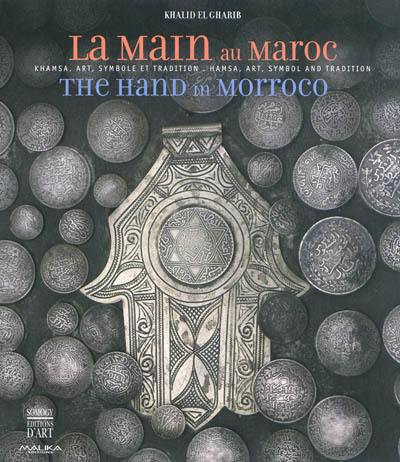
Paru le 05/04/2012 | Relié sous jaquette 205 pages
Tout public
introduction Maurice Arama
La Khamsa emprunte sa forme à la main.
Elle épouse un vocabulaire universel et, avec l'oeil, illustre l'ambivalence des sentiments humains. On désire comme on déteste, d'un simple regard. On aime comme on combat, avec la main.
La collection de Khalid El Gharib propose, au-delà des superstitions primitives et des multiples expressions identitaires, la première anthologie artistique et esthétique sur les représentations de la main. Ces pièces, collectées dans toutes les aires culturelles du Maroc, donnent à voir des bijoux en métal noble, des imprimés, des lampes, des ex-voto, des vêtements, des tissages, des broderies, des manuscrits, des amulettes et les multiples objets utilitaires qui entourent aussi bien la vie quotidienne que les grandes cérémonies.
À travers ce livre, Khalid El Gharib porte un regard sensible sur ces artisans et orfèvres, musulmans et juifs, qui, dans une complicité fraternelle, ont façonné des formes et offert une identité et des styles dont les arts marocains se confortent toujours.
The Hamsa emulates the shape of the hand.
Its vocabulary is universal and, with the eye, it illustrates the ambivalence of human feelings. One likes just as one hates, at a glance. One loves just like one fights : with the hand.
Khalid El Gharib's collection offers, beyond primitive superstitions and the many expressions of identity, the first artistic and aesthetic anthology of the representations of the hand. These items come from all of Morocco's cultural spheres : there are jewels made out of fine metal, printed matter, lamps, ex-votos, clothes, weaves, pieces of embroidery, manuscripts, amulets and the numerous functional objects used in everyday life, as well as for special occasions.
With this book, Khalid El Gharib takes a sensitive look at these Muslim and Jewish craftsmen and goldsmiths who, with brotherly complicity, made these objects and invented an identity and styles which still nurture Moroccan arts today.
Une journée heureuse commence par une découverte, se fortifie par des échanges et trouve harmonie et félicité quand le curieux, le passant et l'esthète accompagnent le soir vos passions.
Cette philosophie est celle de Khalid El Gharib. Son regard est celui de l'exigence, attentif aux empreintes laissées dans les arts marocains par les mémoires passées.
Spécialiste de la poterie marocaine et des bijoux citadins, il présente dans cet ouvrage quelques Khamsa marocaines de sa collection.
Il a publié en 2007 avec Paul Dahan Maroc, deux passions, une mémoire, Éditions Malika/Khalid Art Gallery.
Maurice Arama est peintre, historien de l'art et ancien directeur de l'École des beaux-arts de Casablanca. Ses travaux ont jeté un regard inédit sur le voyage d'Eugène Delacroix au Maroc et ses écrits éclairent l'aventure des peintres orientalistes au Maroc.
A happy day begins with a discovery, gets stronger with exchanges and finds harmony and bliss when the curious one, the passer-by and the aesthete share your passions when the evening comes.
This is Khalid El Gharib's philosphy.
His eye is fastidious, paying attention to the marks past memories have left in Moroccan arts. A specialist in Moroccan pottery and urban jewellery, he presents in this book some of the Moroccan Hamsa of his collection.
In 2007, he published Maroc, deux passions, une mémoire, (Morocco, Two Passions, One Memory) with Paul Dahan (Éditions Malika/Khalid Art Gallery).
Maurice Arama is a painter, art historian and former head of Casablanca's art school. His works have taken a fresh look at Eugène Delacroix's journey in Morocco, and thrown light on orientalist painters'adventures in Morocco.